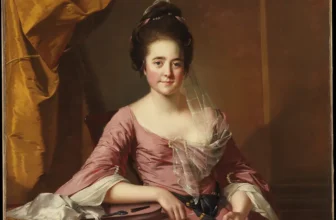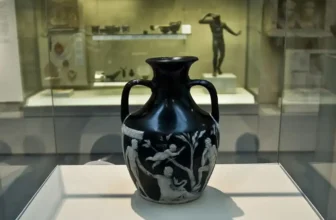Why Collectors Choose Oil Over Acrylic and Watercolor
The Enduring Allure of Oil Paintings
For centuries, oil painting has occupied a unique position at the pinnacle of fine art. From the luminous portraits of the Renaissance to modern masterpieces hanging in today’s galleries, oil remains the preferred medium for both artists and collectors. Despite the rise of acrylics and the timeless charm of watercolors, serious art collectors consistently gravitate toward oil paintings when building their collections.
But why do collectors choose oil over acrylic and watercolor? The answer lies in a combination of visual depth, historical significance, material permanence, and investment value. In this article, we’ll explore these factors in depth, revealing why oil paintings continue to command higher prices, greater prestige, and lasting admiration.
The Historical Prestige of Oil Painting
Oil painting has an unparalleled legacy in art history. From the 15th century onward, it became the dominant medium for masters such as Leonardo da Vinci, Rembrandt, Caravaggio, and Vermeer. The slow-drying nature of oil allowed these artists to develop intricate layers of glazes and subtle transitions of light that were impossible with earlier mediums like tempera or fresco.
For collectors, this historical continuity adds a dimension of cultural significance to every oil painting. Owning an oil work connects them to a centuries-old lineage of artistic tradition. Acrylics and watercolors, though respected, simply don’t have the same deep roots. Acrylic paint only emerged in the mid-20th century, and while watercolors have existed for centuries, they were often regarded as preparatory sketches or illustrations rather than finished, collectible works.
Collectors understand this context. When they invest in oil, they’re not just buying a piece of art, they’re participating in the enduring story of fine art itself.
The Depth, Texture, and Luster Unique to Oil Paint
One of the primary reasons collectors prefer oil paintings is their visual richness and physical presence. Oil paint’s unique formulation, pigment suspended in a drying oil, often linseed or walnut, produces colors that are naturally luminous and deep. The slow drying time allows artists to blend tones seamlessly, creating gradients and glazes that mimic how light interacts with real surfaces.
In contrast:
Acrylics dry rapidly, often within minutes, which can make blending and glazing difficult. The result can appear flatter or more matte.
Watercolors rely on transparency and light paper surfaces, producing delicacy but lacking the density and texture of oil.
Oil paintings, however, command space. They have a tactile surface, often built up through layers of impasto, thick, textured strokes that capture light differently across the canvas. This physicality adds to their visual drama, and collectors are drawn to that presence. Under different lighting conditions, an oil painting can almost transform, revealing subtle nuances that keep the viewer engaged.
For serious collectors, texture and depth are not merely aesthetic features, they signify mastery, authenticity, and emotion.
The Longevity and Durability of Oil Paintings
Longevity is another decisive factor. Oil paintings, when properly maintained, can last for centuries with minimal fading or deterioration. Many of the masterpieces from the Renaissance and Baroque eras are still vivid today, proving the medium’s durability.
Acrylics, while often marketed as durable, are still relatively new. No one can say with certainty how they will age over centuries. Some studies suggest that acrylics can attract dust or lose vibrancy over time due to their flexible polymer base.
Watercolors, on the other hand, are notoriously delicate. They are susceptible to light damage, moisture, and handling wear. Even with protective framing, they must be displayed carefully to avoid fading.
Collectors who think in terms of legacy and investment value tend to favor oil paintings for this reason. A well-executed oil painting can retain its brilliance for generations, making it a tangible, enduring heirloom.
The Investment and Resale Value of Oil Paintings
From an economic perspective, oil paintings generally hold higher investment value than works in other mediums. The fine art market consistently rewards oil paintings with higher auction prices and greater liquidity. Collectors, galleries, and museums all tend to treat oil as the “gold standard” of painting mediums.
Several factors contribute to this:
Market Tradition: For centuries, art markets have been structured around oil paintings. From old masters to contemporary icons, oil has remained the most traded and exhibited medium.
Perceived Prestige: Collectors often view oil paintings as the pinnacle of artistic achievement, which drives demand and, consequently, price.
Durability: Because oil paintings withstand time, they maintain collectible condition longer, enhancing long-term value.
Acrylics and watercolors can certainly appreciate in value, especially when created by established or historically significant artists, but statistically, oil paintings dominate the high-end segment of auctions and gallery sales. For collectors seeking both aesthetic pleasure and financial appreciation, oil remains the preferred choice.
The Flexibility and Range of Expression in Oil
Oil paint offers artists an unmatched range of expressive possibilities, which in turn attracts collectors seeking unique, emotionally rich works. With oils, artists can work in thin, translucent glazes to create soft atmospheric effects or apply thick impasto for dramatic texture. The same pigment can appear radically different depending on how it’s handled, something not easily achievable with acrylics or watercolors.
Because of this versatility, oil paintings often carry a greater sense of individuality and craftsmanship. Collectors appreciate that no two oil paintings are ever alike, even when depicting similar subjects. The slow drying time encourages reflection and revision, leading to works that feel deliberate and deeply layered, both technically and conceptually.
By contrast, the quick-drying nature of acrylics can produce spontaneity but limits complex layering techniques. Watercolors, while fluid and expressive, require immediacy and restraint, which can yield breathtaking results but fewer opportunities for reworking. For collectors who value visible craftsmanship and process, oils represent the ultimate expression of artistic control and depth.
The Emotional and Sensory Impact of Oil Art
Collectors don’t just buy art with their eyes, they buy it with their emotions. Oil paintings have a sensory quality that resonates deeply. The surface sheen, the texture of brushwork, even the faint scent of linseed oil, these sensory cues evoke intimacy and authenticity. Standing before an oil painting feels like encountering the artist’s presence in physical form.
Psychologically, oil paintings also convey warmth, depth, and permanence. The richness of color and the way light interacts with oil’s reflective surfaces create a sense of life and movement that few other mediums match. Acrylics, while vibrant, can feel synthetic or overly uniform. Watercolors, though ethereal, often evoke fragility rather than strength.
Collectors, especially those who display art in living or professional spaces, often seek works that anchor a room, art that commands attention and emotion. Oil paintings do this naturally, becoming not just decoration but focal points of atmosphere and dialogue.
Oil’s Compatibility with Restoration and Conservation
Another reason collectors prefer oil is its restorability. Over centuries, conservation techniques have evolved specifically to preserve oil paintings. Professional restorers know how to clean, repair, and even reconstruct aged oil works without compromising their integrity.
This extensive knowledge base makes oil a safer long-term investment. Minor damages, such as craquelure (fine surface cracks) or discoloration, can be addressed effectively, often restoring the painting to near-original condition.
Acrylics and watercolors, however, are far more challenging to restore:
Acrylic surfaces can become sticky, attract dust, or develop microcracks that are difficult to reverse.
Watercolors are sensitive to moisture and light, limiting conservation options.
Collectors understand that maintenance predictability equals peace of mind. An oil painting can age gracefully, with the assurance that skilled restorers will always know how to preserve it.
Oil as a Symbol of Artistic Integrity
In the collector’s world, medium choice often symbolizes artistic integrity and mastery. Oil painting requires patience, technical skill, and an understanding of materials that few artists fully master. The deliberate pace and craftsmanship align with collectors’ values: dedication, depth, and excellence.
Acrylic and watercolor have their own merits, acrylic for innovation and modernity, watercolor for spontaneity and delicacy, but oil represents the essence of fine art discipline.
Many collectors view oil paintings as benchmarks of an artist’s maturity. A successful oil work signals not just talent but also training, persistence, and historical awareness. It’s why art academies and galleries still emphasize oil painting as the foundation of professional art practice.
The Cultural and Psychological Value of Tradition
Humans are drawn to tradition, it provides a sense of continuity and meaning. Collecting oil paintings satisfies this instinct. Each piece carries echoes of the masters who shaped Western art’s evolution. Whether an artist works in realism, impressionism, or abstraction, the medium itself connects modern expression to a timeless lineage.
Collectors often describe oil paintings as “living history.” They represent a dialogue between past and present, a tangible link to centuries of human creativity. Acrylics and watercolors, while respected, lack this symbolic weight. For many collectors, choosing oil is as much about cultural identity as aesthetic preference.
Oil Paintings as Timeless Centerpieces in Modern Interiors
Even beyond the fine art market, oil paintings hold a special place in interior design and architecture. Their bold textures and deep colors complement both classic and contemporary spaces. Whether framed in gilded wood or floating on minimalist walls, oils bring a sense of luxury and permanence.
Collectors and designers alike understand that oil paintings transform spaces, they become visual anchors that exude sophistication and history. Acrylics and watercolors can enhance a space, but oils define it.
This aesthetic dominance reinforces why collectors continue to invest heavily in oil artworks, whether for private homes, corporate collections, or gallery exhibitions.
The Enduring Choice of Oil for Collectors
Collectors choose oil over acrylic and watercolor not because the others lack merit, but because oil offers everything an art collector values most:
Historical prestige and cultural depth
Rich texture and luminous color
Proven longevity and restorability
Superior investment and aesthetic value
Oil painting is more than a medium, it’s a legacy. It bridges past and present, craft and emotion, beauty and permanence. For collectors, that combination is irresistible.
Whether displayed in a private salon or a public museum, oil paintings will always symbolize the pinnacle of fine art. Their enduring appeal lies not only in what they depict, but in how they embody centuries of human creativity, one luminous brushstroke at a time.




